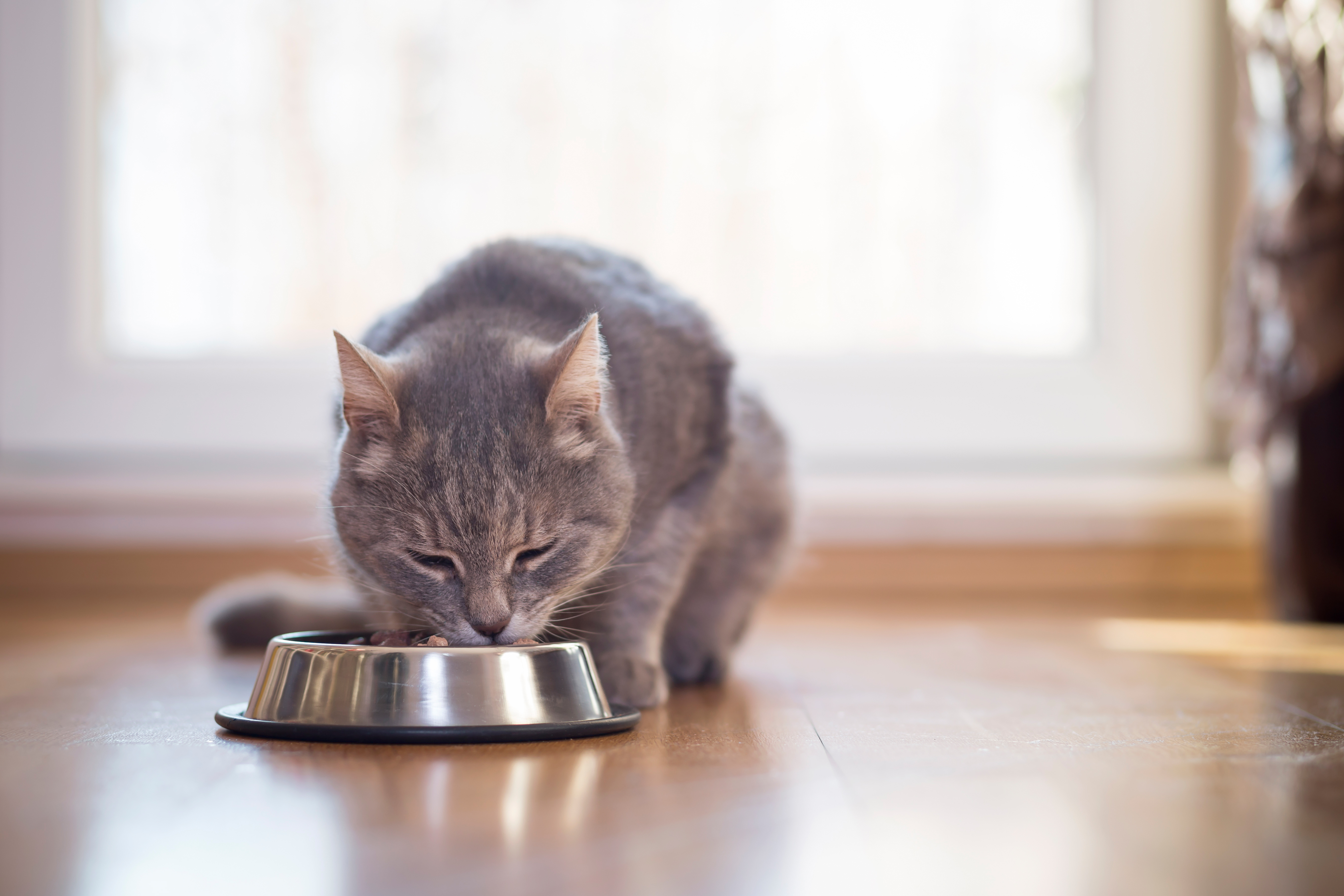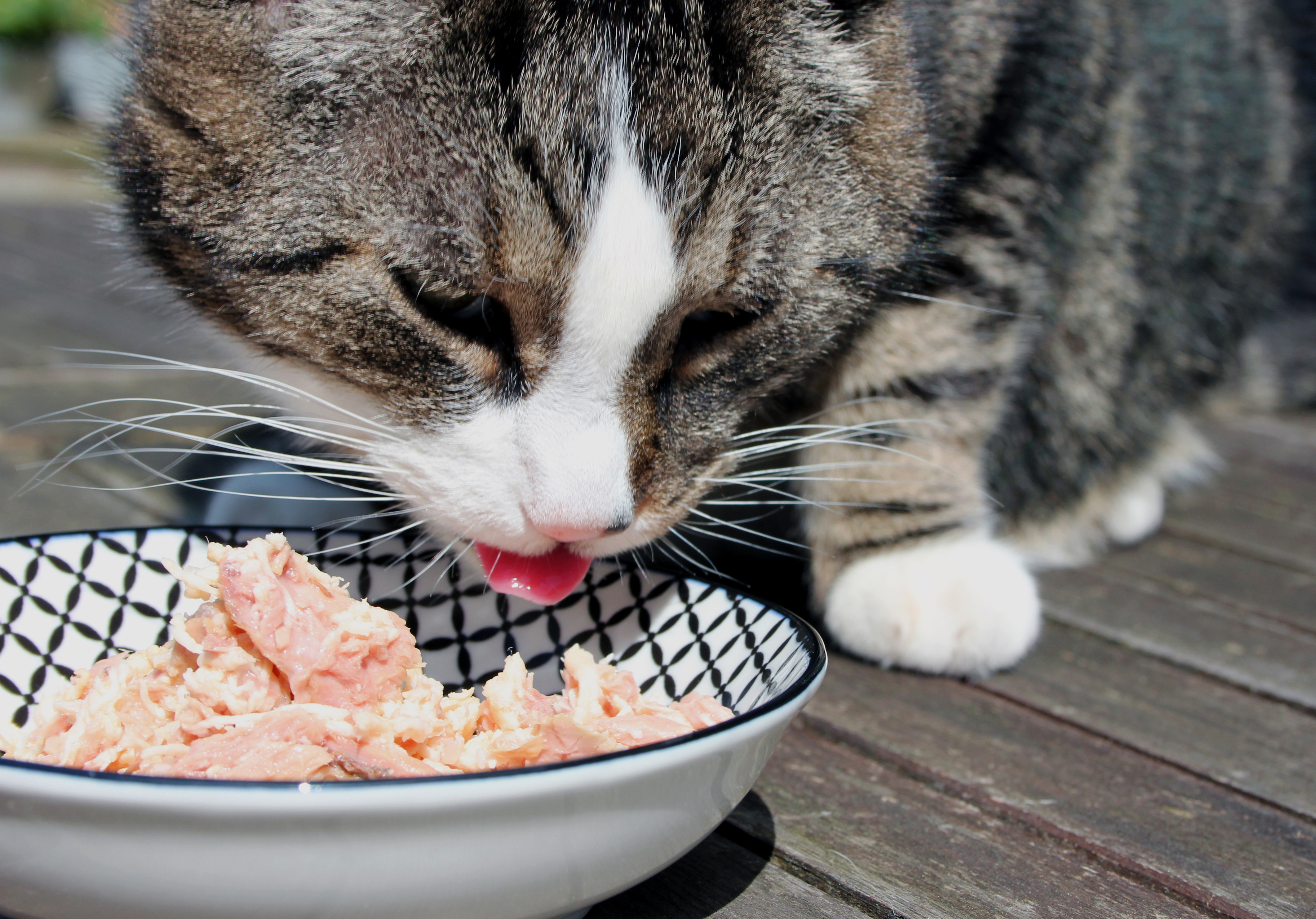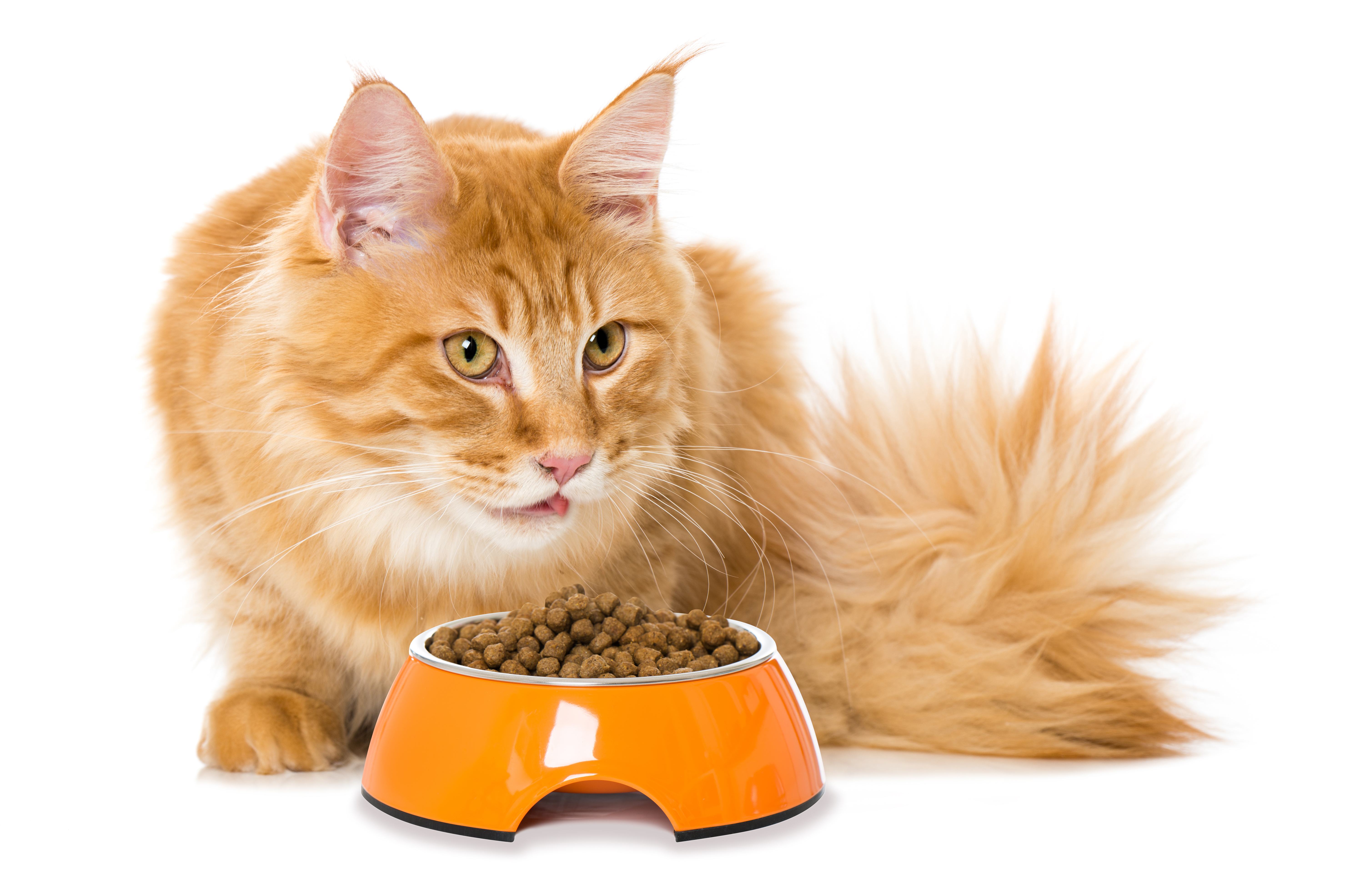
 What should I feed my cat?
What should I feed my cat?There is a lot of conflicting information out there regarding dry (kibble) versus wet (canned/pouch) food; grain versus grain-free; raw versus conventional diets; what about organic or gluten free? All of this can be confusing for any cat owner.
Veterinary research has not yet concluded what the optimal combination of protein, fat and carbohydrates (macronutrients) is for a feline diet. We do know the minimal requirements of the more important of these macronutrients. Commercial diets are manufactured based on these for each life-stage group, such as a kitten, a neutered cat or an older cat, and have additional essential vitamins and minerals.
Here are the facts based on current scientific evidence.
Cats have developed unique strategies to utilise protein, fats, carbohydrates and vitamins. Cats can metabolise carbohydrates but they are not an essential dietary nutrient for them. Cats do require high quality proteins in their daily diet.
When food preferences of populations of feral and colony cats were studied, they naturally selected high protein (52%), high-fat (35%) and very low carbohydrate (12%) diets. This in part matches the small rodents and birds that make up the majority of their natural diet.
It might suit you, but it isn’t for puss. A lot of chemistry is required to make these diets suitable for cats when nature had it all sorted in meat protein.
Feeding more food doesn't stop cats from killing birds or mice; it merely results in weight gain. Cats eat many small meals a day, they eat alone and have a small stomach, resulting in a lower intake of carbohydrates per meal. Feeding twice a day or having the bottomless bowl of food is not a 'natural' way for cats to eat.
In a study comparing feral cats eating a ‘wild diet’ and domestic cats eating commercial dry and canned  diets, there was no difference in the degree of periodontitis in either group. Calculus (tartar) accumulation was present in both groups but less in cats fed commercial diets. Other factors such as breed, age, chewing behaviour and general health may have a considerable influence on the prevalence of periodontal disease.
diets, there was no difference in the degree of periodontitis in either group. Calculus (tartar) accumulation was present in both groups but less in cats fed commercial diets. Other factors such as breed, age, chewing behaviour and general health may have a considerable influence on the prevalence of periodontal disease.
A raw diet consists primarily of meat, bones and organs that haven’t been cooked. If you are intending to feed a raw diet please take advice on the best way to prepare this to ensure it is nutritionally balanced and we would advise you consult a veterinary nutritionist to do this.
A raw diet has more potential to contain disease-causing organisms such as salmonella, campylobacter, parasites and protozoa as opposed to regular cat food due to the fact the these are normally killed during the cooking process. This can be more of an issue if the raw meat is wild or game.
Handling raw diets can pose a risk of transmission of these organisms to the humans preparing them so optimal meat handling and hand hygiene plus assessment of your household risk factors i.e immunocompromised individuals (small children and babies, individuals receiving chemotherapy or other immunosuppressive drugs) should be done to ensure no issues arise.
In 2018/2019 Feline Tuberculosis caused by Mycobacterium Bovis was diagnosed in 13 pet indoor cats that were fed a commercial raw food diet (wild venison).
The commonly identified food allergens in cats with dietary hypersensitivities are beef (20%), dairy (14.6%), fish (13%), lamb (6.7%) and barley/wheat (4.5%). Grains are not inherently more allergenic. Grain-free diets are not necessarily low in dietary carbohydrates as the alternate sources of carbohydrate used could contain at least as much sugar.
 Dry foods
Dry foodsDry cat foods contain a higher number of carbohydrates than tinned cat food or food sources found in a raw diet. However, recent studies suggest that high carbohydrate diets are not associated with weight gain and obesity in cats but that other factors such as dietary fat, energy density and feeding method play a more important role.
Commercial cat foods are manufactured to be complete, balanced and provide at least the minimum requirements (usually a lot more) of the essential nutrients your cat will require at that particular stage of their life. Some commercial foods will have higher quality ingredients than others and in order to choose a suitable diet for your cat, research the company, the ingredient list and the nutrient profile of the foods you are feeding – read the back of the pack!
It is important to note whether a food is 'complete' or 'complementary'. The latter means the product will not be balanced and should only be fed as a treat or alongside a 'complete' diet. Feeding 'complementary' food on its own could result in significant nutritional imbalances.
We are here to help you choose a diet that is appropriate for your cat and you. We generally recommend a mixed 2/3rd wet and 1/3rd dry diet, appropriate to your cat’s life stage and body condition.
When choosing a canned food, choose the best quality you can comfortably afford with the highest percentage of high quality protein (think mouse in a can!). In order to encourage more normal feeding habits, use puzzle feeders and small, multiple, timed feeds for the dry food ration, splitting your cat’s daily ration in 5 small feeds throughout the day. If you would like to feed a raw diet, we are here to help you find a diet that is nutritionally balanced and guide you with appropriate food safety measures.
More information on feeding your cat to keep them healthy can be found on International Cat Care’s website.
If you think your cat is overweight or would like more diet advice, please call us on 0203 740 1112.